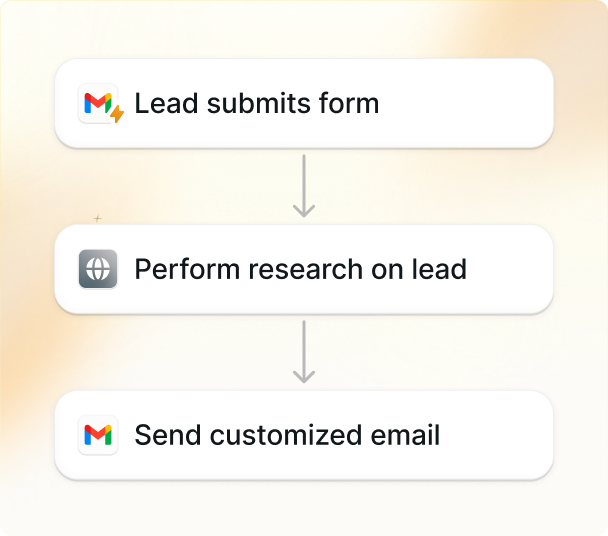Medical telescribes can remotely take notes and help complete EHR charts for you. But are human telescribes really the best solution in 2025?
With advances in artificial intelligence, there may be a few surprises to consider before you go all-in on a telescribe.
In this article, we’ll cover:
- What is a telescribe and why do clinicians use medical telescribes?
- Downsides, types of AI telescribes, and cost savings
- Can AI scribes fully replace medical telescribes?
- Tips for implementing AI in your clinical practice
What is a telescribe or medical scribe, anyway?
A telescribe, also meaning a medical scribe, is a person who handles all the nitty-gritty charting, documentation, and assists with EHR updates while you keep your eyes on your patient, where they should be.
A medical scribe can work right beside you in person, or a remote medical scribe can follow along through a video or audio feed to keep your notes organized. They make it easier to get through appointments without spending hours documenting after.
Sounds perfect, right? Well, sort of. They come with some pretty eyebrow-raising costs, and there’s always a tiny bit of worry about sharing sensitive patient info with someone outside the clinic.
Why do clinicians use medical telescribes?
Many doctors use virtual medical telescribes to offload time-consuming charting and EHR documentation.
Here’s what they get out of it:
- Productivity goes up: When telescribes tackle routine paperwork, doctors see more patients and provide better care. Bafflingly, studies show physicians spend nearly 2 hours on EHR tasks for every hour of direct patient care. Telescribes can reduce that to around 30 minutes, boosting productivity by up to 50 percent.
- They save plenty of money: While telescribes do charge for their services, many practices find that increased clinician productivity and reduced administrative overhead ultimately save cash. The more time doctors spend with patients, the more patients they can see and bill for - a big win for the bottom line.
- Documentation remains compliant and accurate: Professional telescribes go through intensive training to learn medical terminology, charting best practices, and EHR systems; they provide fast, accurate documentation and make sure all entries meet legal and regulatory requirements. This helps clinicians reduce common (and costly) documentation errors.
What are the downsides of a medical telescribe?
It’s not all sunshine and rainbows, though.
There are some downsides to hiring a telescribe:
- They’re expensive: Hiring and paying telescribes can be an expensive ongoing expense for practices, especially smaller ones. Telescribes typically charge $25 to $45 or more per hour of work in the US. (You can probably outsource for less, but make sure that the professional is accredited and has a high level of English proficiency.)
- There are risks: Allowing telescribes access to sensitive patient health information poses risks of data breaches, HIPAA violations, or patient discomfort.
- Room for mistake: Though telescribes aim for accuracy, they rely on hearing physician-patient conversations, and some details may be missed or recorded incorrectly. Physicians still have to give notes a good once-over.
What is an AI telescribe, and what are its types?
These AI scribes use natural language processing (NLP) and machine learning to accurately record patient encounters and let physicians input these notes directly into electronic health records (EHRs), which simplifies the documentation process for physicians.
Let’s check out the main types:
Voice recognition AI scribes
These systems transcribe your spoken words, recording every detail of patient encounters. They’re a solid fit for clinicians who want to narrate notes as they go without having to risk tendinitis.
- The good is: Syncs right into your flow, so you can just talk and watch the notes appear like magic. (Hint: It ain’t magic.)
- The bad: A bit jumpy with noise. Perfect for quieter settings, but a sneeze could turn into “nasal emergency.”
Template-driven AI documentation
This AI fills out standard templates by pulling relevant data from patient history and visit notes. It’s quick and reliable for straightforward cases, letting you check off items rather than filling out the whole thing.
- The good: Speeds things up with predictable, no-fuss entries.
- The bad: Not great for quirky cases. Templates can sometimes feel a little too cookie-cutter, so that some customization may be needed.
Conversational AI with decision support
This one doesn’t just record — it’s got opinions. Need a nudge on the next step? It’ll throw out suggestions based on past cases.
- The good: Keeps an eye out for critical details and offers handy nudges, like “Did you mean to prescribe this?”
- The bad: Occasionally a bit too eager, like that friend who thinks they’re your life coach. Handy, but letting it take over is unwise.
AI scribes: Cost savings without the downsides
How? Medical dictation software charges a flat monthly or annual subscription fee rather than an hourly rate — this can lead to huge savings down the line. We’re talking thousands to tens of thousands of dollars.
Then, with virtual scribes, there are no concerns about sensitive patient data being accessed or transmitted improperly. Most high-end AI scribes adhere to strict compliance protocols, just like physicians are required to.
Additionally, physicians can see more patients in less time with an AI scribe, as they experience significantly less downtime when documenting notes compared to waiting for a human scribe.
Since the AI works as fast as the physician needs to go, it can help them win back as much as 2 hours per day.
Can an AI scribe really replace a medical telescribe?
AI scribes understand medical terminology because they’ve been trained on incredibly large datasets and continue to learn over time. Some AI scribes can handle basic documentation and charting tasks, and the best of the bunch can handle even more complex tasks — that only humans could do a year or two ago.
However, human telescribes understand context and nuance in a way that’s still hard for most AI systems to replicate — but they’re getting there at an accelerated rate. They can ask clarifying questions, rephrase physicians' statements for clarity, and handle exceptions or non-standard situations more easily.
Telescribes also build relationships and familiarity with providers over time, learning individual styles, preferences, and workflows.
But, for high-volume, routine documentation, AI scribes can already beat human telescribes in both cost-cutting and quality.
But in complex cases, especially those involving sensitive patient issues, human insight and empathy are a huge asset — and an intangible one, at that.
Best practices for using an AI scribe
Using an AI scribe effectively requires a bit of an adjustment period.
Here are a few tips to get the most out of your new digital assistant:
- You need to train AI in order to make the most of it. Emphasize the importance of regular use to improve its understanding of your specific speech patterns, medical terminology, and documentation style.
Initially, take extra care to speak clearly and correct any gaffes, helping the AI in its learning process.
- Starting with routine documentation tasks can build confidence in your AI scribe's capabilities, suggesting a gradual approach to incorporating technology into your practice.
First, begin with simple entries like vital signs and basic patient histories before progressing to more complex documentation, allowing both you and the AI to adjust smoothly.
- Maintain a natural way of speaking during patient encounters for the best results with AI technology, highlighting that the AI scribe is designed to adapt to your normal conversational tone and style.
There's no need to over-articulate or revamp your speaking habits, as the AI performs at its best when interactions are as authentic as possible.
- Regularly reviewing and editing the AI-generated documentation maximizes accuracy and reliability, underscoring the importance of overseeing the AI's work before finalizing any patient notes.
Despite huge advances in AI technology, manual checks are still essential to catch and correct any errors in critical patient information, such as medication dosages and vital signs.
Summing up
While human telescribes still have a place in healthcare, AI-powered solutions are quickly rising as a preferred alternative for their accuracy, cost-effectiveness, and security.
One thing’s for sure: As tech continues advancing, it seems inevitable that AI and collaborative solutions will become the new normal.
For now, it’s up to you to weigh the pros and cons and choose what's best for your unique needs!
Try Lindy medical scribe

Are you looking to elevate your clinic's operations with cutting-edge AI? Lindy agents use advanced AI technology that surpasses traditional medical telescribes — we’re talking about second-to-none efficiency levels.
Let’s take a look at some tangible wins:
- Get an immediate 80% decrease in time spent on charting, freeing up to 8 hours weekly to focus on what truly matters - your patients.
- Accuracy levels over 99%, beating out practically every other AI medical telescribe solution out there.
- Lindy not only saves time but also boosts your income, with potential annual earnings increases ranging from $20,000 to $45,000 per physician, according to clinician reports.
- One-click note copying lets you easily take your transcriptions to your current EHR/EMR.
- At just $99 per month (or $49 for students), Lindy offers a more affordable solution than employing a medical telescribe while also delivering over 99% accuracy.
- Its medically optimized AI excels at recognizing medical terminology and abbreviations, so your records are spotless, secure, and fully compliant with HIPAA and PIPEDA standards.
- Lindy integrates effortlessly with your current systems, such as Zoom and the Google ecosystem, and allows for the incorporation of customizable templates into your daily tasks.










.png)

.png)
.png)

